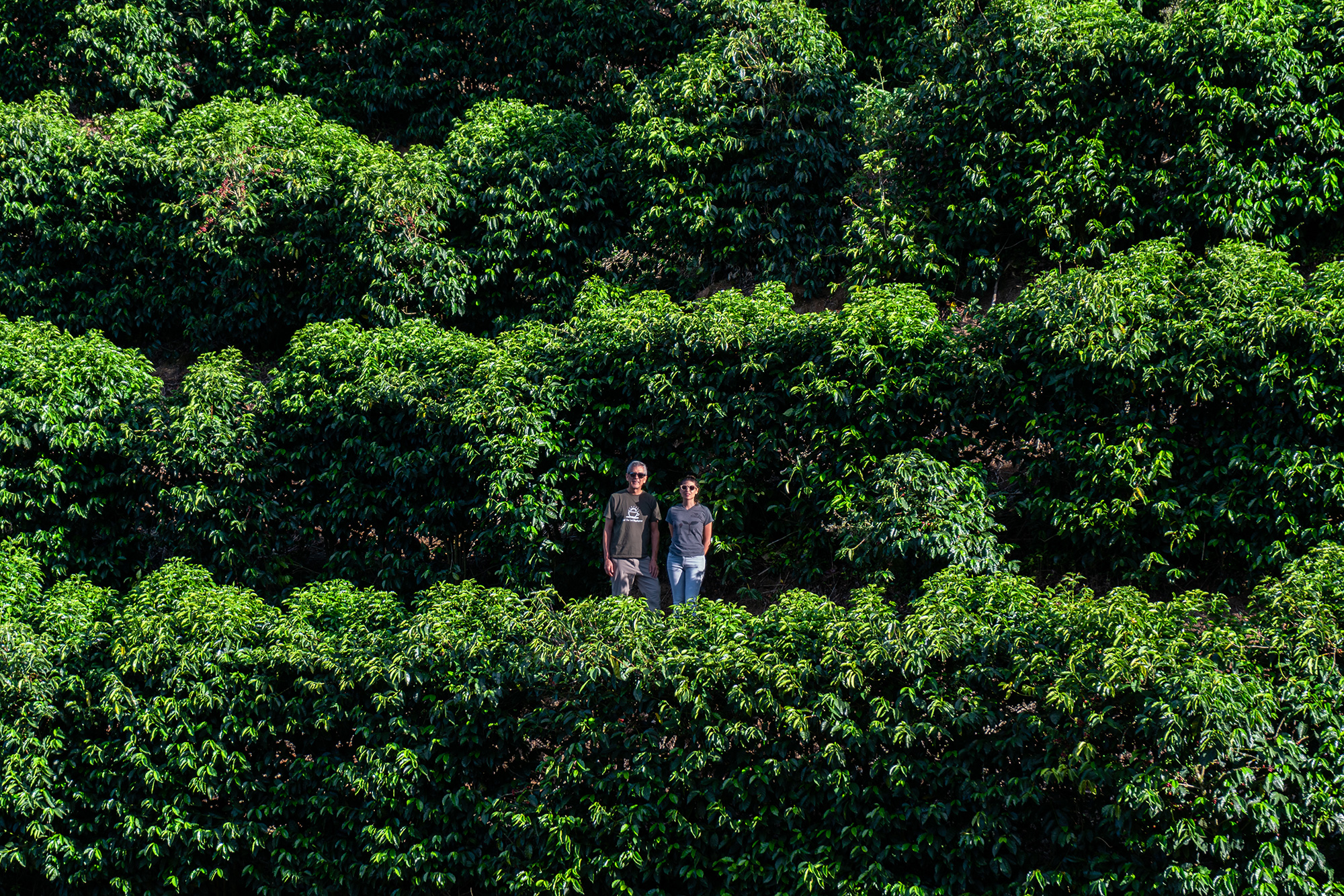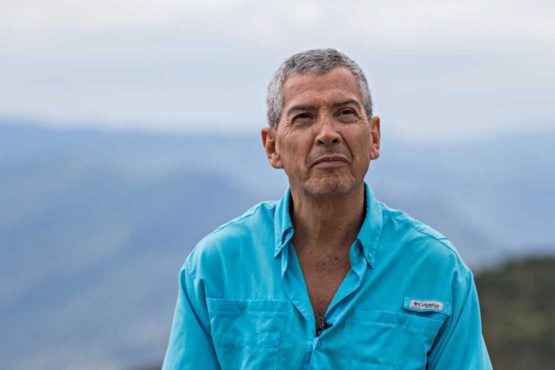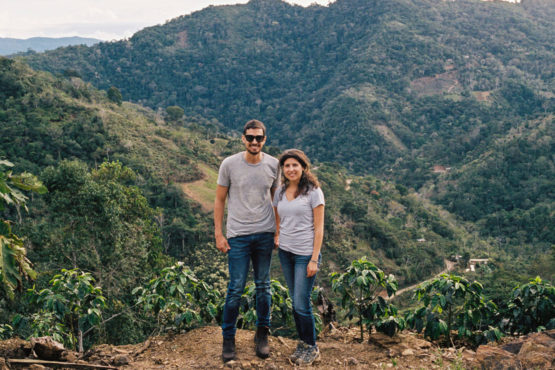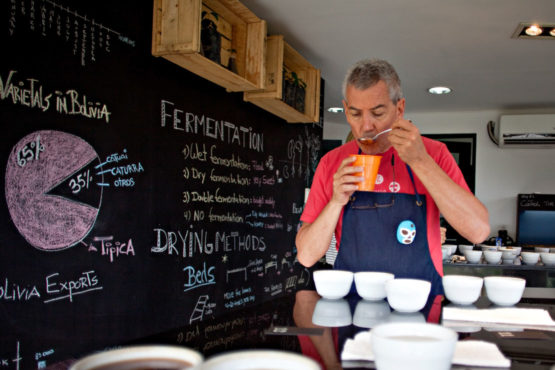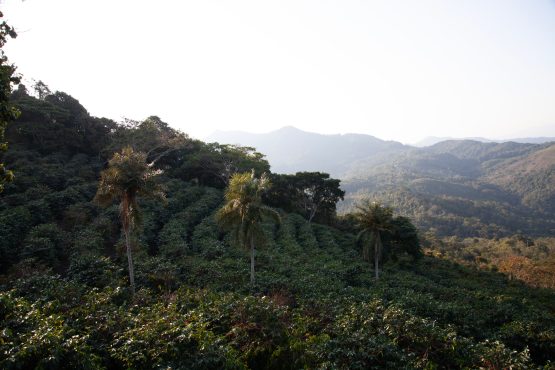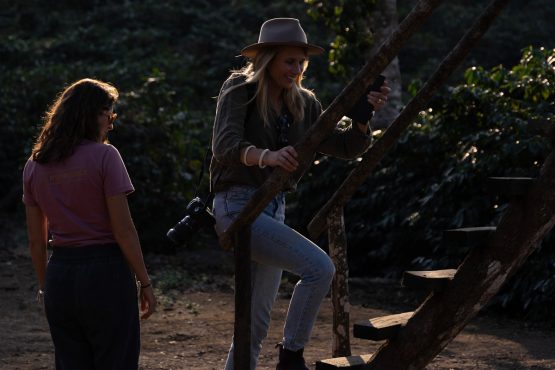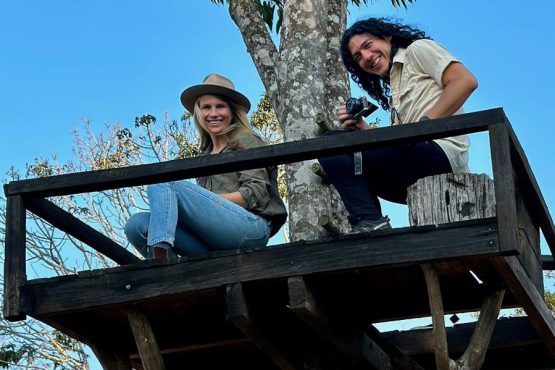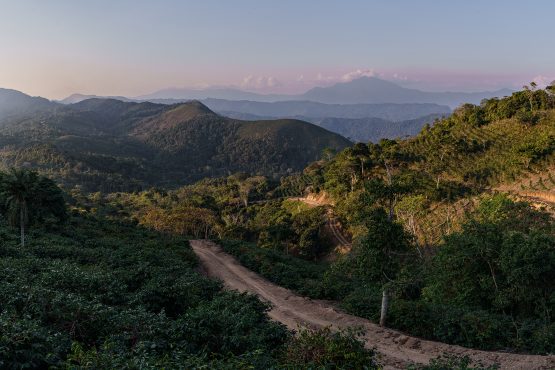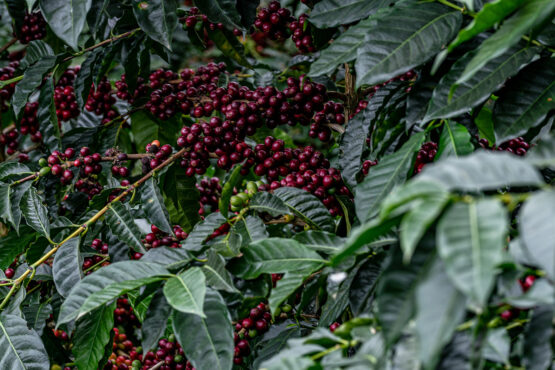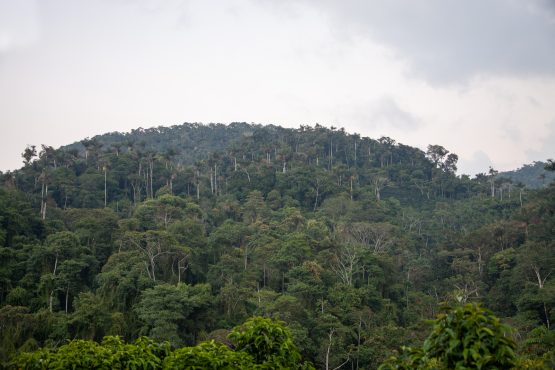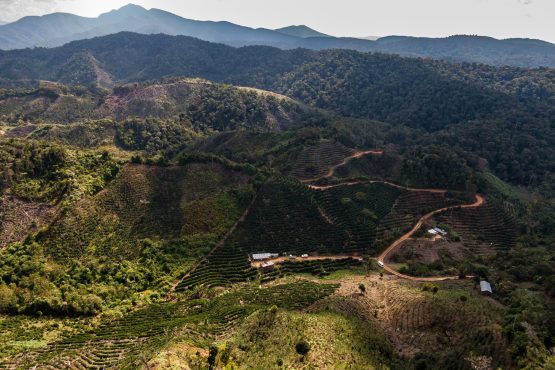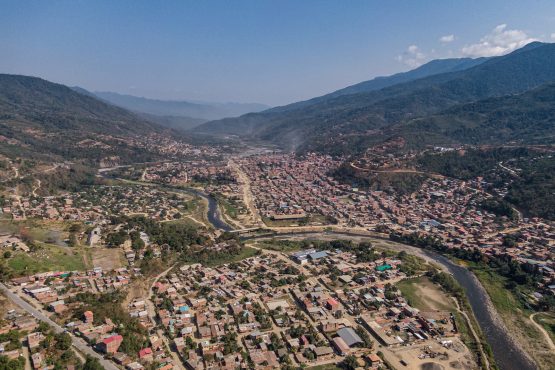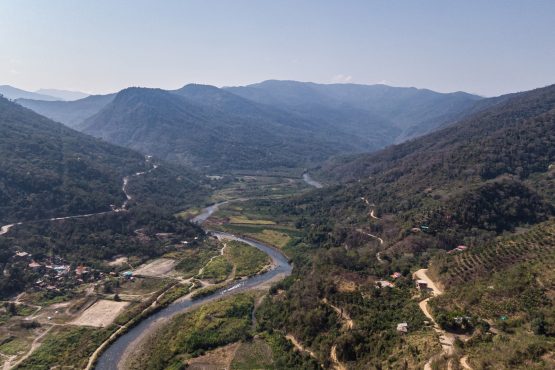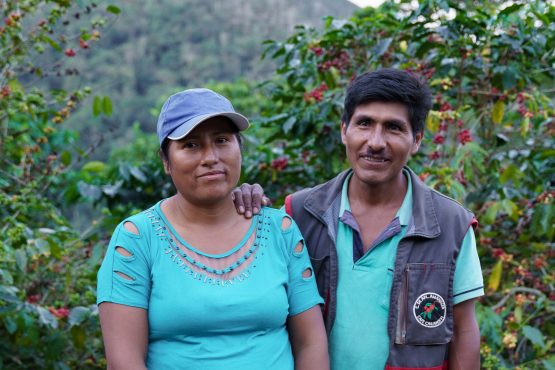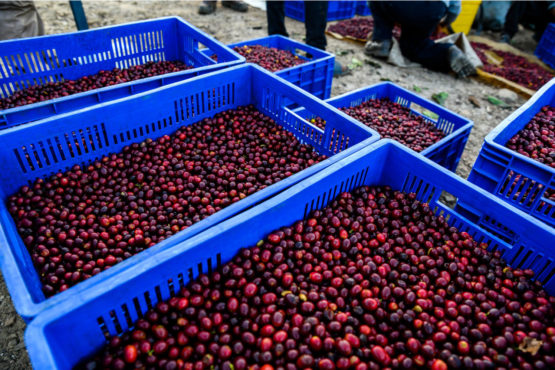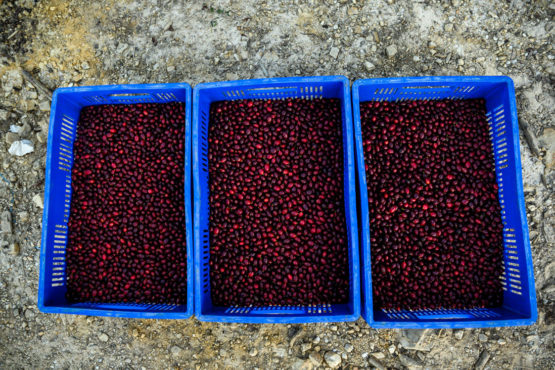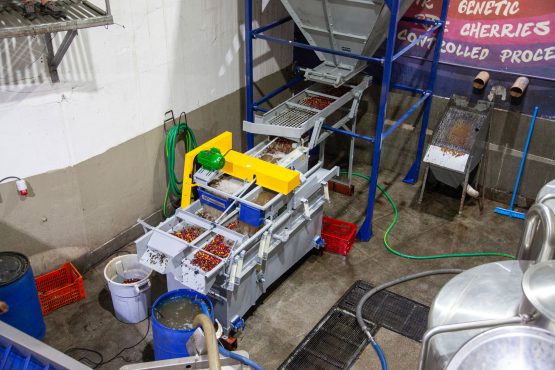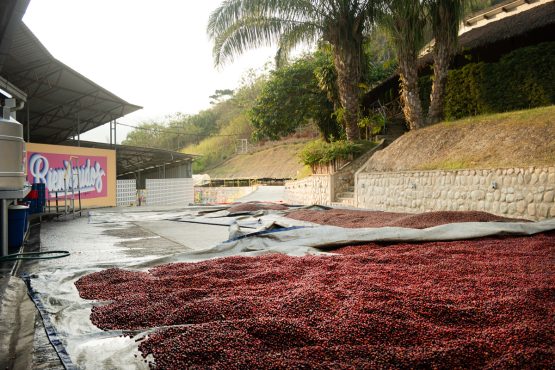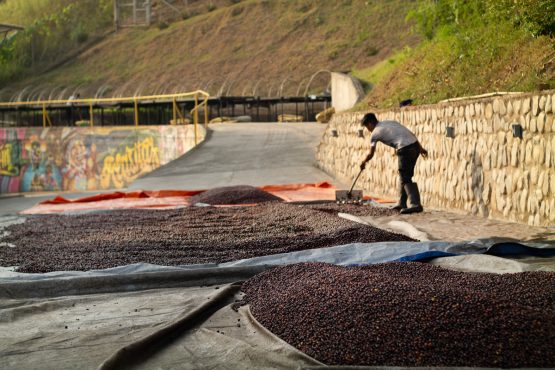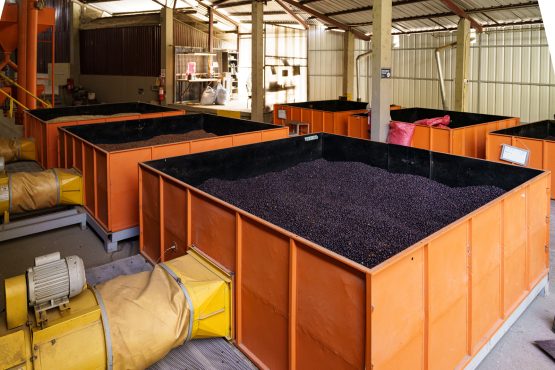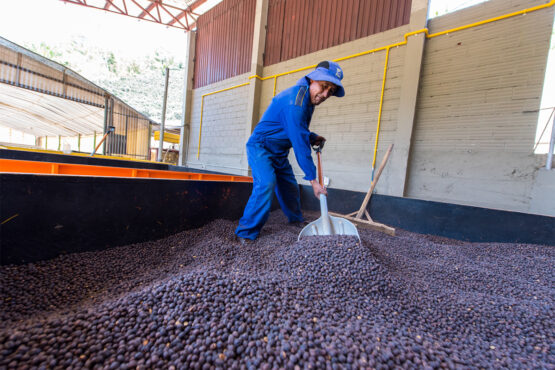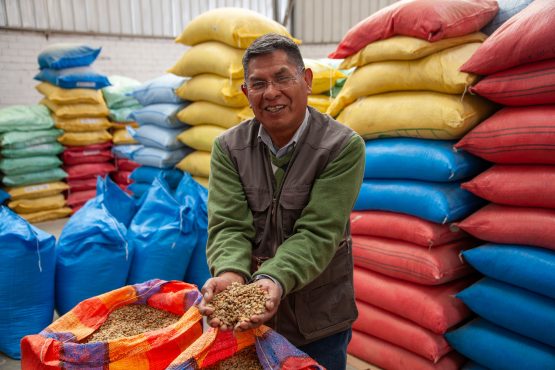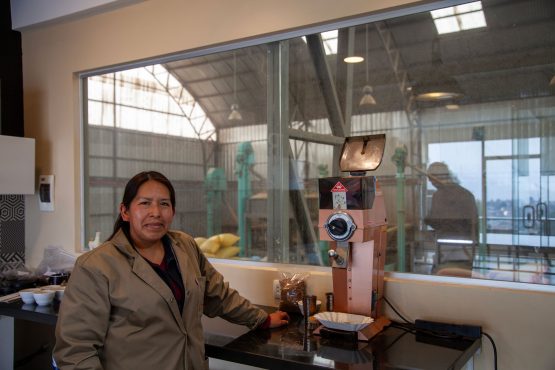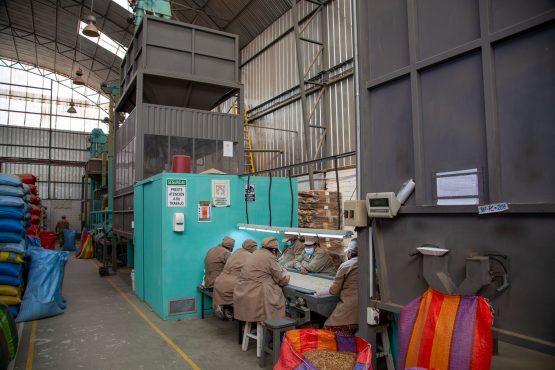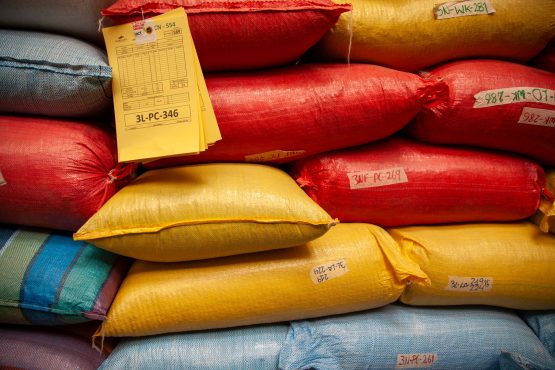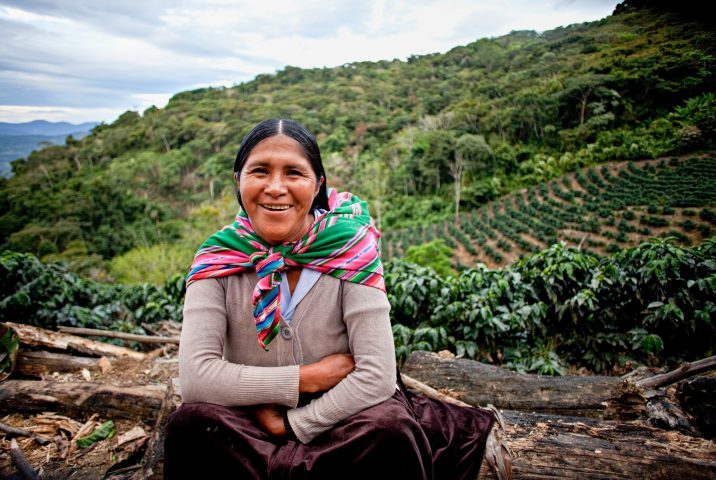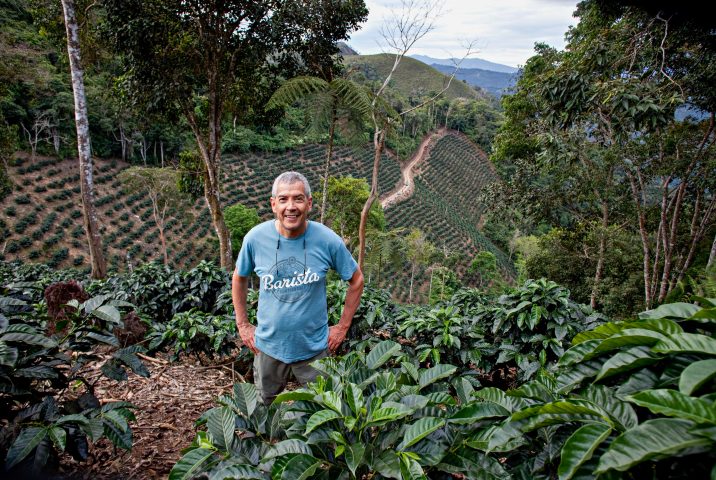Los Rodríguez Peaberry Java Coco Natural
Silky bodied and sweet, with tropical acidity and a clean finish. Pineapple, lemonade and lime cordial.
This 100% Java lot is made up of peaberry coffee beans from three farms in Caranavi that are owned by Pedro Rodríguez and his family: La Linda, La Llama and Waliki. Normally coffee seeds develop as a pair with flattened facing sides, but sometimes just one seed develops and forms an oval shape to occupy the entire space within the coffee cherry. This is called a peaberry and these small and round coffee beans are carefully selected and separated out from the rest of the crop during the milling stages. These tiny beans pack a lot of flavour, but since their volumes are extremely limited, the Rodríguez family have blended the total production of three of their farms to produce this lot.
Java is a coffee variety with a long history of cultivation across the globe. Its name comes from the Indonesian island of Java, where it was first introduced directly from Ethiopia by the Dutch in the early 19th century. From there, it has become popular in West Africa and Central America, where it has thrived as an interesting alternative to the Gesha variety. Java has the potential to be quite profitable to small coffee farmers, thanks to its incredibly distinct flavour profile and high cup quality, and its high tolerance to coffee leaf rust and coffee berry disease. It was originally thought to be a Typica selection, but recent genetic testing revealed it is closely related to an Ethiopian landrace variety called Abysinia.
ABOUT LA LINDA
La Linda is a ten hectare farm (six of which are under coffee) located in the colony of Bolinda, which lies in a lush, steep mountain valley around 10 kilometres outside of the town of Caranavi. The colony of Bolinda was founded 52 years ago and was once known as ‘Bolivia Linda’ or ‘Beautiful Bolivia’. Over the years this name was shortened to Bolinda, and it is now one of the larger settlements in the area.
The farm was established in 2012, and its first year of production was in 2015. We feel very close to this farm – we were there the first year it was planted and have watched it grow every year since.
La Linda’s high altitude – about 1,482-1,550 metres above sea level – helps to ensure the slow maturation of the coffee cherries; at high altitudes, night-time temperatures are more stable, and during the day temperature is mild. This allows more time for a higher concentration of sugars to develop in the cherry and bean, which in turn helps produce an incredibly sweet and clean coffee.
Pedro and his family have invested a lot of time and effort into trying to make this a ‘model’ farm that other producers in the area can learn from. Their learnings have also been used to inform the best ways to plant and manage their future farms. Daniela explains that “La Linda was the reason we decided to start producing high-quality coffee … we acquired the land as an experiment to see if the company could produce high-quality coffee. Starting with our own knowledge and making plenty of mistakes, La Linda has turned into one of our biggest success stories. What we have learned at La Linda has developed and shaped the plans for our future farms and become the base of our Sol de la Mañana program”.
ABOUT WALIKI
Waliki is the Rodríguez family’s newest farm and was planted in 2016. The farm is laid out on a slope (as shown in the video below), and is planted with Java at the top, followed by pink and yellow bourbon, and Panama Gesha at the base. The name is a greeting in the local Ayamara language meaning, “how’s everything” to which the answer is, “all good,” or “Hakuna Matata.”
As the family’s final property to be purchased in the region, Waliki was designed to incorporate all the learnings from farming in Bolinda for the previous years, which is why it is Pedro’s son Pedro Pablo’s (who manages Agricafe’s agriculture program) favourite of their plantations. The farm is 7.9 hectares in size and sits at about 1,600 metres above sea level.
ABOUT LA LLAMA
La Llama is the highest of all of the Los Rodríguez farms in Caranavi, sitting at over 1,700m above sea level. Early in the morning or late afternoon, it is common to find an atmospheric fog covering the coffee plants, caused by the region’s unique microclimate. La Llama is 9.58 hectares in size, 5.24 of which are under coffee. While it had been producing coffee for over fifteen years when the family first acquired it, it has only been in harvest under their practices since 2017. Today, the farm’s production is still small, yet the Geshas produced here are of exceptional quality.
Reaching the highest point of the farm is an experience in itself. The trail to the top, which Pedro has affectionately dubbed “The Path of the Puma” (though no pumas are found on the farm!), begins at the rear of Las Alasitas farm, as shown in the video below – and as you travel along the winding, steep roads in a four-wheel-drive you’ll pass very neat and perfectly spaced rows of coffee. In the last couple of years, trees at La Llama have been spaced out further, to give the roots more room to expand, and to ensure branches can receive sunlight more directly. While this has reduced productivity of the plantation, it has reduced its need for irrigation, as water shortages are a major concern in the region.
In recent years, the Rodríguez have renewed their sustainability efforts across all of their farms. Because they understand that plants are supported by nutrients found in the soil, their practices have shifted to ensure these are constantly being replenished. This includes incorporating fallen leaves and coffee pulp on the bases of each tree, and planting shade trees (including eucalyptus trees and Flamboyanas, a species known locally as “fire flowers” because of their beautiful foliage) in areas with high risk of erosion. Not only have these practices improved Caranavi’s reddish, sandy clay soils, they have also helped boost its biodiversity.
All of the Rodríguez family’s learnings have also been shared with local producers through a training program that the family has developed called ‘Sol de la Mañana.’ Head here to learn more about this wonderful program, and here to learn more about the incredible work the Rodríguez family and Agricafe are doing in Bolivia.
ABOUT CARANAVI
The inhabitants of Caranavi first started farming coffee in the 1950s, when a government-led agrarian reform resulted in small parcels of land (of around 10 hectares in size each) being redistributed back to thousands of largely Aymara families. The Aymara are one of Bolivia’s 36 indigenous nations, who originally lived on the highlands of the Altiplano (a vast plateau of the central Andes that stretches from southern Peru to Bolivia and into northern Chile and Argentina). Along with the Quechuas, who lived in the Bolivian lowlands, both groups immigrated to Caranavi to find a better life through agriculture.
The municipality is located in the Yungas ecoregion, one of South America’s most fertile and diverse locations. The region runs along both sides of the Andes Mountains, and is known for the world’s highest lake, called Titicaca. In the Quechua language, Yungas translates to “the warm lands,” in reference to the rainy, yet warm climate experienced in the region.
HOW THIS COFFEE WAS PROCESSED
At all Fincas Los Rodriguez, pickers from the Caranavi community and the state of Beni are hired to carefully handpick the coffee during the harvest. These pickers are hired by Elda and her husband Felix (Carmela Aduviri‘s son), and trained to collect only the very ripest cherries, and multiple passes are made through the farm throughout the harvest to ensure the coffee is picked at its prime. Selective picking is extremely important for special micro-lots like this one, to ensure the sweetest cup. The Rodríguez family has found that harvesting the very ripest (almost purple) cherries result in the most complexity and distinction in the coffee.
Pedro draws a lot of inspiration from the wine industry in his approach to coffee production, and is always innovating and trialling different processing techniques. This lot was processed with experimental techniques, part of the Rodriguez’ family’s long term strategy to achieve the greatest distinction and diversity in their special lots. As Pedro’s daughter, Daniela shares: “We’re keeping a registry of all the data we’re compiling, to use in the coming seasons. It includes information on the types of tanks used, bacteria and yeast activity, ambient temperature and weather conditions… we’re working hard to identify the ideal processing conditions for each variety and farm.” Watch the video below, to see how this coffee was processed:
Cherries for this lot were delivered to Agricafe’s state of the art mill Buena Vista in the evening. After being inspected and weighed, the coffee cherry was carefully sorted by weight using water and disinfected, in a large capacity machine the Rodríguez family have dubbed ‘La Maravilla,’ which translates to ‘the wonder’ due to its efficiency. Not only does this new piece of equipment use significantly less resources than in previous years, but it recirculates water several times before it is treated and returned to the local waterways. Coffee was then carefully washed and laid out to dry on patio for 48-72 hours, and then placed in one of Buena Vista’s ‘stationary box’ (or coco) dryers, until it reached 11.5% humidity.
These boxes are series of steel containers that are typically used for drying cocoa pods. They use a gentle flow of warm air from below the coffee bed to dry the parchment slowly and evenly. Coffee was stirred manually at regular intervals to further ensure it dried at a uniform rate.
Once the coffee was dry, it was transported to La Paz where it was rested before being milled at Agricafe’s dry mill, La Luna. At this state-of-the-art mill, the coffee was first hulled and sorted using machinery, and then by a team of workers who meticulously sorted the coffee again (this time by hand) under UV and natural light. The mill is one of the cleanest and most impressive we have seen – you can read more about it here.
